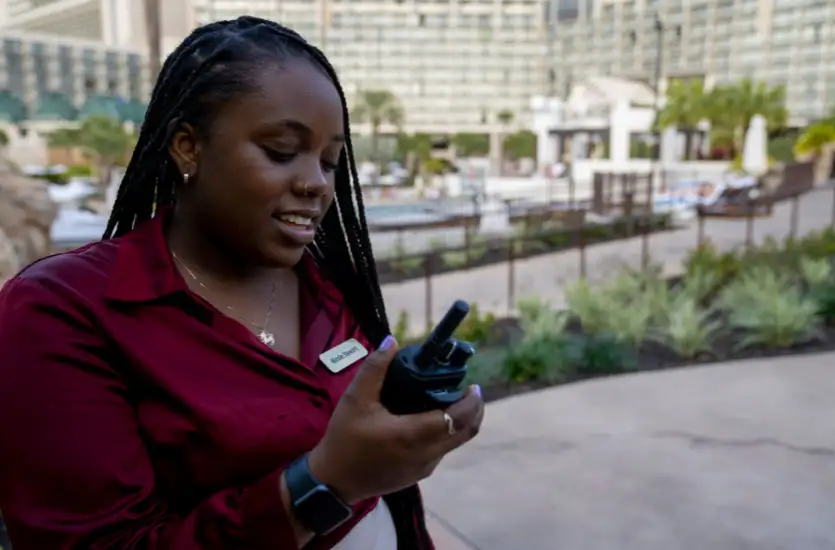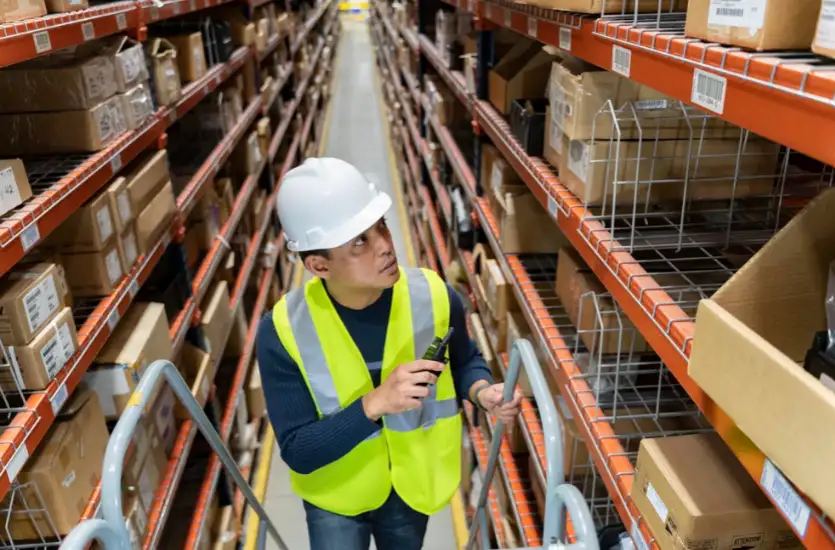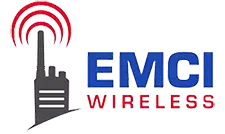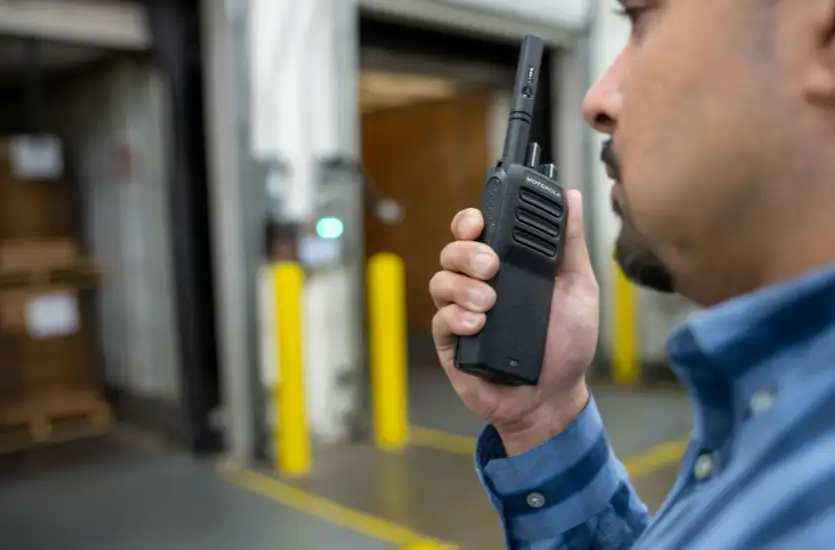Reliable long-range communication is crucial in a wide variety of industries, as it facilitates effective collaboration and coordination, enabling businesses and organizations to operate efficiently while minimizing delays and disruptions.
Unfortunately, maintaining clear communication over long distances presents several challenges, including time zone differences, technological barriers, and the potential for misinterpretation. Additionally, network issues or platform inconsistencies can further complicate communication if teams use unreliable technology.
Particularly in emergency response and disaster management, personnel teams must maintain clear lines of communication over longer ranges. Dependable long-range communication systems ensure timely information sharing, which can be vital for decision-making and operational success.
Cellular phones are easily damaged, and often experience signal inconsistency, which can result in critical issues during high-stakes situations. However, modern two-way radios have features like better encryption, enhanced range, and high water resistance rating, which can help teams maintain clear communication in challenging situations.
Key Features That Enhance Communication Range
There is a fairly large selection of two-way radios on the market, and some types may be better suited for different settings or applications. Before buying a two-way radio, it’s important to consider features like power output, antenna quality, and frequency bands, as these directly impact range and signal quality.
Power Output
Higher wattage increases the communication range of two-way radios by providing more powerful radio frequency (RF) signals that can travel longer distances with less degradation. When a radio transmits at a higher wattage, the emitted signal can cover greater areas and penetrate obstacles such as buildings, trees, and terrain more effectively.
A stronger signal can overcome interference and is less likely to be absorbed or scattered. Consequently, high-wattage radios can maintain clearer and more reliable communication over extended distances, which is particularly beneficial in emergencies or expansive outdoor environments.
Because higher-wattage radios transmit more power, they typically have a shorter battery life than their lower-wattage counterparts, so it’s essential to consider both features. Technological innovations like Motorola’s IMPRES batteries and chargers can extend battery life and reduce charging times, making radios with these features ideal for applications that require long range and lifespan.
Antenna Quality
Antenna design significantly affects signal transmission in two-way radios by influencing factors such as range, clarity, and overall communication quality. The antenna’s shape, size, and orientation dictate how efficiently it transmits and receives signals, impacting both the frequency and bandwidth used.
Two-way radios are typically designed with either built-in or external antennas. Built-in antennas are integrated directly into the device, offering a sleek, compact design with minimal external components. However, they may have limited range and performance due to space constraints and the materials surrounding them.
In contrast, external antennas are separate components that can be adjusted or upgraded, providing better signal reception and transmission capabilities. They often offer greater flexibility in placement and can be positioned in optimal locations to enhance connectivity.
Checking user reviews and expert ratings for insights can help you find a radio with a high-quality antenna. Additionally, it may be helpful to look for models that include features like digital signal processing, which can enhance sound quality and reception clarity. Lastly, consider the radio’s overall build quality and durability, as a solid construction can significantly impact its overall functionality and longevity.

Frequency Bands
Like power output and antenna design, frequency plays a crucial role in determining the range of two-way radios. The primary differences between UHF (ultra-high frequency) and VHF (very high frequency) frequencies lie in their wavelength range, propagation characteristics, and typical applications.
UHF signals have shorter wavelengths, which allows them to carry more data and support a greater number of channels but makes them more susceptible to obstacles like buildings and trees, leading to limited range in urban areas.
Conversely, VHF signals have longer wavelengths, allowing them to propagate over greater distances, especially in rural and open environments, making them ideal for emergency communications.
The Federal Communications Commission (FCC) regulates the commercial use of two-way radios through a framework of licensing and operational guidelines to ensure efficient and interference-free communication. This includes assigning frequencies to various industries and services, as well as requiring users to obtain the appropriate licenses for their specific applications.
While it may seem tempting to violate these rules for convenience, using unlicensed radios can result in FCC penalties and cause significant reputation damage to an organization. Ultimately, the potential risk of using unlicensed radios negates any short-term advantages gained by flouting FCC regulations.
Best Long-Range Walkie Talkie Comparison
When evaluating the best long-range two-way radios, we considered a variety of factors, including specifications, unique features, advantages, drawbacks, and ideal scenarios for use. It’s essential to review the features of each radio to find the one that best suits your needs.
Motorola TLK 110
The Motorola TLK 110 utilizes a cellular network with a cloud-hosted repeater system for nationwide coverage. It can support up to 96 channels and hold 1,000 contacts. It features a battery life of 18 hours and an IP rating of 67, making it highly durable and water resistant.
The TLK 110 is part of Motorola’s WAVE PTX platform, allowing it to access cell phone apps and interoperability with traditional radios and web-based dispatch applications. Some unique features of the Motorola TLK 110 include:
- Lone worker and fall alert;
- Wi-Fi Connectivity;
- Private and group push-to-talk;
- Real-time presence;
- Carry holster with swivel belt clip;
- AI-based noise suppression;
- GPS/GNSS location tracking.
The combination of battery life and durability offered by the TLK 110 makes it ideal for field service organizations like emergency response, event management, transportation, logistics, and security system installation.
Motorola MOTOTRBO R7
The Motorola MOTOTRBO R7 is a more traditional two-way radio that can communicate radio-to-radio or through repeaters and radio systems for enhanced coverage. The MOTOTRBO R7 does not provide nationwide coverage, but it can leverage onsite repeater infrastructure to provide facility or campus-wide coverage without forcing the user to rely on a cellular network for uptime, giving them more control over their own destiny.
The MOTOTRBO R7 features an IP rating of 68, making it water and dustproof. Additionally, it offers up to 28 hours of battery life, making it ideal for long operations. Along with best-in-class audio, noise cancellation, and durability, the MOTOTRBO R7 offers several unique features, including:
- 1,000 Channels;
- VHF, UHF, 800/900 MHz;
- Wi-Fi connectivity;
- Bluetooth;
- Modern, intuitive user experience;
- Robust and corrosion-proof side connector;
- Sleek and ergonomic form factor;
- Automatic acoustic feedback suppression.
Because its advanced communication capabilities can enable rapid onsite responses, the MOTOTRBO R7 is ideal for applications like campus security, utility repair, manufacturing, and construction.

Motorola MOTOTRBO Ion
The Motorola MOTOTRBO Ion is a two-in-one device that combines a portable radio with an Android and camera interface, allowing users to complete a greater variety of tasks with one device. The MOTOTRBO Ion leverages the same systems as the MOTOTRBO R7, but it can also be equipped with a SIM card to leverage the WAVE PTX network as well.
The MOTOTRBO Ion combines some of the best aspects of the MOTOTRBO R7 and the TLK 110, but its most revolutionary feature is its compatibility with the Android ecosystem. This gives it a much wider range of capabilities, such as accessing tools like data analytics solutions and intelligent virtual assistants. Some other unique features of the MOTOTRBO Ion include:
- Android platform;
- Open app ecosystem;
- Motorola Solutions’ unified technology ecosystem;
- Full multimedia capabilities;
- Intuitive touchscreen interface;
- Dedicated PTT device;
- Seamless voice handover.
The MOTOTRBO Ion is interoperable with WAVE PTX, DMR (MOTOTRBO), Long-Term Evolution (LTE), Wi-Fi, CBRS, and Bluetooth networks. Because its numerous capabilities allow users to perform a wide range of functions, it is ideal for use in fast-paced, demanding industries like retail, hospitality, and education.
How To Choose the Right Two-Way Radio for Your Needs
Along with assessing the available features, it’s important to consider your environment when shopping for a two-way radio, as some radios may be less effective in certain settings. Making these considerations can help you ensure optimal performance and compatibility with your organizational needs.
Consider Your Environment
Terrain and obstructions significantly affect the signal strength of two-way radios due to the way radio waves propagate. When signals travel through various landscapes, factors such as hills, mountains, buildings, and dense vegetation can block or attenuate the signals.
Similarly, urban environments with tall buildings can cause multipath interference, where signals bounce off surfaces and arrive at the receiver out of phase, reducing clarity and strength. Consequently, users in these challenging environments may experience poor communication range and reliability, necessitating the use of higher-power equipment or repeaters to overcome these obstacles.
VHF frequencies, typically ranging from 138-174 MHz, are often preferred for long-range communication and can penetrate obstacles like trees and buildings better due to their ability to travel farther. However, UHF frequencies, ranging from 400-512 MHz, are better suited for urban environments where there are numerous obstacles, as they can carry more data and are less prone to interference.
Assess Required Features
Two-way radios can come with a variety of features designed for different applications. To ensure optimal communication and efficiency, you should look for radio features that suit the requirements of your industry and the needs of your organization.
For example, the best radios for transportation companies may include features like GPS location tracking to support route optimization or single-button push-to-talk to minimize distracted driving. Meanwhile, private security companies may value encryption features to protect sensitive information.
EMCI Wireless is Your One Stop Shop for Two-Way Radios
Investing in portable radios for your business makes sense, but it is a big decision. And you want to make sure you get it right the first time. At EMCI Wireless, we are happy to discuss your business needs with you to help you make the right choice. Our team of experts is local so they can provide in-person support, from licensing to programming, we’ll get you what you need to improve your organization’s communications.
To get started, request a free consultation today. Or, if you are ready to make a decision, feel free to request a free quote. Either way, we’re here to support you with two-way radio sales, service, and everything in between.

